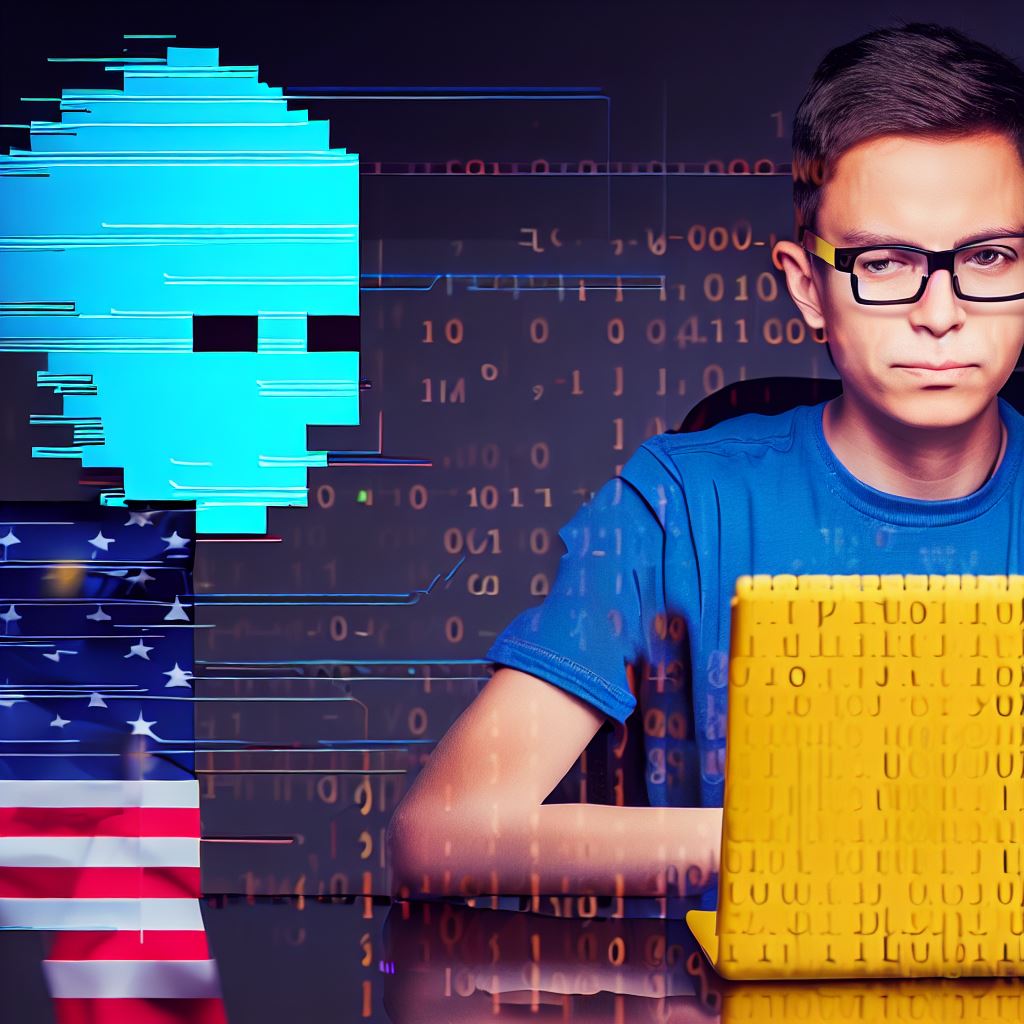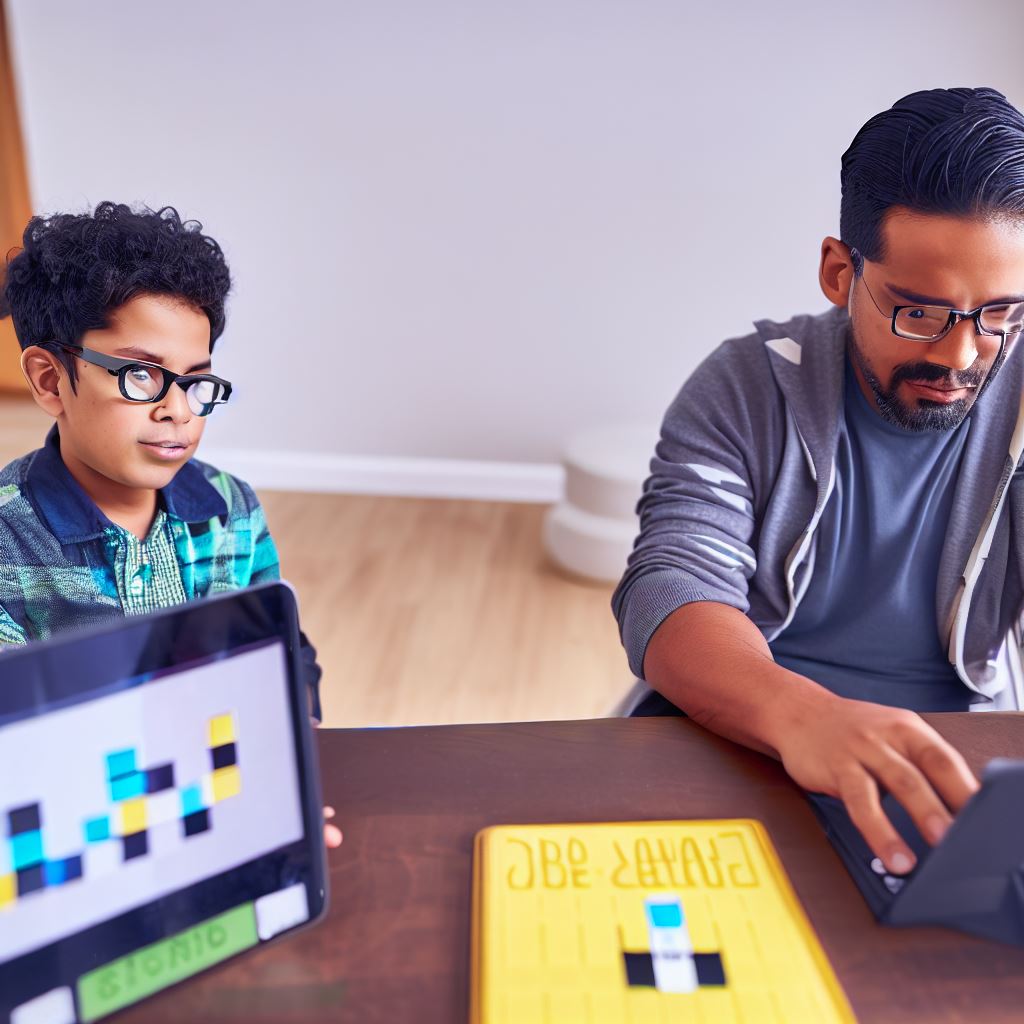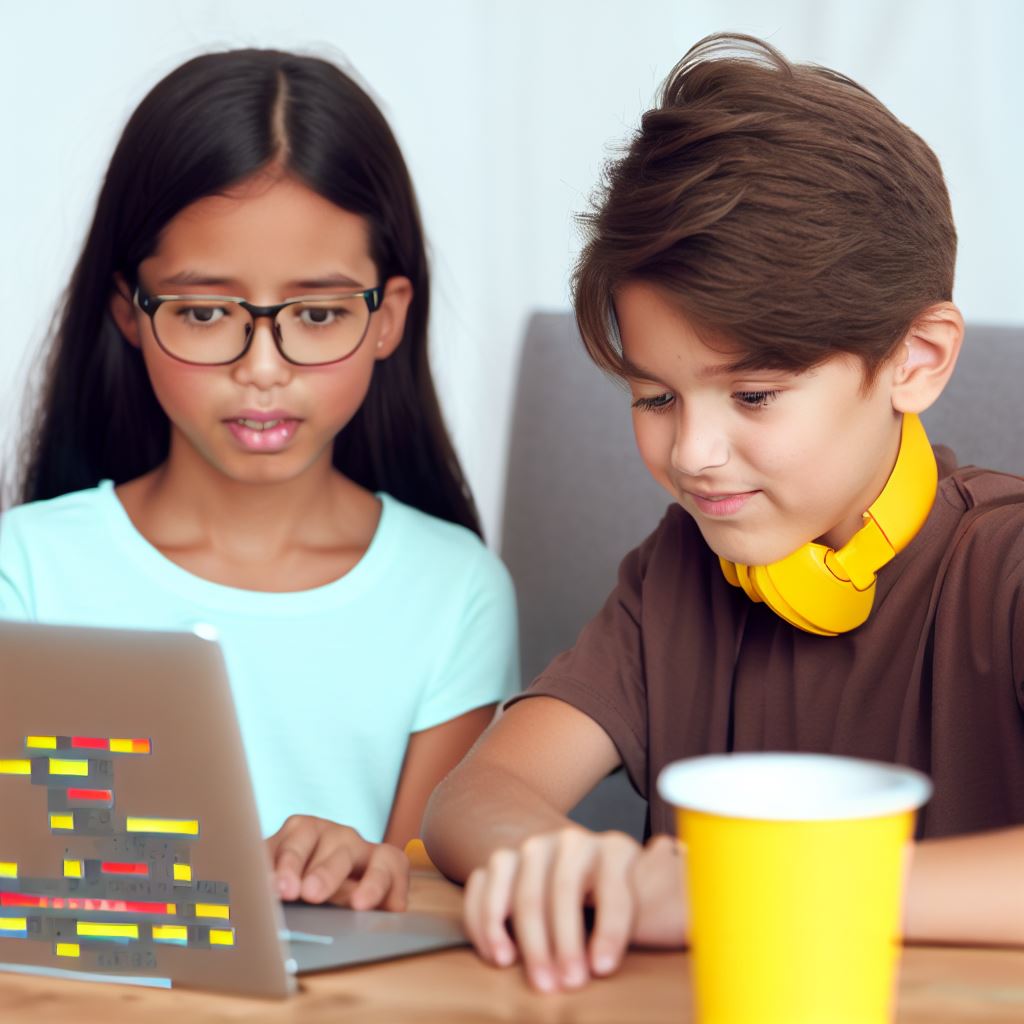Introduction to Scratch and Animation
Scratch is a programming language that provides users with an interactive platform to create animations and games.
It offers a range of features that make it user-friendly and appealing to learners of all ages.
Animation and game logic are essential components of Scratch projects. They allow users to bring their creations to life and engage with their audience in exciting ways.
The purpose of this blog post is to guide readers in mastering animation and game logic using Scratch.
By the end, readers will be equipped with the necessary skills to create captivating projects.
Understanding Animation Basics
In the world of programming, animation refers to the process of bringing objects to life through movement.
- Sprites: These are the images or characters that can be animated in a program.
- Costumes: Each sprite can have multiple costumes, which are different appearances or poses of the same sprite.
- Frames: A frame is a still image that is displayed for a specific duration before transitioning to the next frame.
Creating Simple Animations in Scratch
To create simple animations in Scratch, you can utilize the built-in animation tools.
- Start by selecting a sprite from the library or importing your own custom sprite.
- Next, add costumes to the sprite. Costumes can be edited or created from scratch using the paint editor.
- To animate the sprite, use the scripting blocks to control the movement and appearance of the sprite.
- One of the most fundamental animation blocks in Scratch is the “change x by” or “change y by” block, which moves the sprite horizontally or vertically.
- Using the “next costume” block, you can cycle through the different costumes of a sprite to create a simple walking animation.
- In addition to changing costumes, you can also use the “wait” block to pause the animation for a certain duration.
- To enhance the animation, you can add sound effects or use conditional statements to create interactive animations based on user input.
- If you want to loop an animation continuously, you can utilize the “forever” block to repeat the animation indefinitely.
- For more complex animations, you can experiment with other blocks such as “glide,” “go to,” or “set rotation style.”
- Remember to test and debug your animations as you build them to ensure they work as intended.
Animation in programming provides a powerful tool for creating engaging and interactive experiences.
By understanding key animation terms like sprites, costumes, and frames, and mastering the use of Scratch’s built-in animation tools, you can bring your ideas to life through captivating animations.
Read: Python in Game Development: Pygame Basics
Exploring Game Logic
In this section, we will delve into the concept of game logic and its pivotal role in creating immersive interactive experiences.
We will also explore common game mechanics, including player input, scoring, levels, and collision detection.
Furthermore, we will examine how Scratch’s programming blocks can be effectively utilized to implement game logic.
Game Logic and Its Role in Creating Interactive Experiences
Game logic constitutes a set of rules and algorithms that govern the behavior and progression of a video game.
It encompasses various aspects such as determining a player’s actions, advancing through levels, and establishing win or loss conditions.
Tech Consulting Tailored to Your Coding Journey
Get expert guidance in coding with a personalized consultation. Receive unique, actionable insights delivered in 1-3 business days.
Get StartedEssentially, game logic acts as the backbone that enables interactive experiences.
In order to create engaging and immersive games, developers must meticulously design and implement game logic.
By doing so, they can craft compelling narratives, challenging gameplay, and rewarding experiences for the players.
Game logic is responsible for shaping the flow and mechanics within a game, guiding players through different scenarios and providing them with a sense of control and accomplishment.
Common Game Mechanics
Various game mechanics are essential components of game logic. These mechanics include player input, scoring, levels, and collision detection.
Player input refers to the actions and commands initiated by the player, such as movement, attacking, or interacting with objects in the game world.
Scoring mechanisms allow players to earn points based on their actions and progress within the game.
Levels serve as stages or segments that players advance through, often increasing in difficulty as the game progresses.
Collision detection is the process of identifying when game objects interact or collide with each other.
How Scratch’s Programming Blocks Can Be Used to Implement Game Logic
Scratch, a visual programming language, provides an array of programming blocks that can be utilized to implement game logic effectively.
These blocks can be dragged and snapped together, creating a series of commands and rules that define the behavior and mechanics of a game.
For instance, Scratch offers blocks for capturing player input, such as arrow keys or mouse clicks, enabling developers to control character movement or initiate actions.
The scoring mechanism can be implemented using variables and conditional statements to track and update the player’s score based on specific actions or events.
Levels can be structured using conditional statements, where specific actions or conditions need to be met in order to progress to the next level.
Build Your Vision, Perfectly Tailored
Get a custom-built website or application that matches your vision and needs. Stand out from the crowd with a solution designed just for you—professional, scalable, and seamless.
Get StartedCollision detection can be achieved through the use of sensing blocks, allowing developers to detect when game objects collide and trigger corresponding actions or consequences.
By harnessing Scratch’s programming blocks, developers can effectively implement game logic and create engaging, interactive experiences.
The simplicity and visual nature of Scratch empower both beginners and experienced developers to experiment with and refine their game mechanics, resulting in captivating games.
Overall, mastering animation and game logic with Scratch provides an enriching journey into the world of game development.
By understanding game logic and leveraging Scratch’s programming blocks, developers can craft compelling interactive experiences that captivate players and bring their game ideas to life.

Enhancing Animations with Motion and Effects
In this section, we will explore advanced animation techniques using Scratch and learn how to create smooth motions, rotate sprites, scale them, and make changes in opacity.
Additionally, we’ll discover how to add various effects such as trails, glows, and shadows to enhance our animations.
1. Advanced animation techniques using Scratch
- Create complex animations using Scratch’s powerful animation tools.
- Combine different sprite movements to design engaging and dynamic animations.
- Experiment with timing, synchronization, and coordination to bring your animations to life.
2. Techniques for smooth motion, sprite rotation, scaling, and opacity changes
- Learn how to make sprites move seamlessly across the screen with smooth motions.
- Understand the concepts of sprite rotation and explore different methods to rotate sprites smoothly.
- Discover how to scale sprites proportionally or selectively to create desired visual effects.
- Experiment with changing the opacity of sprites to make them fade in or out.
3. How to add effects like trails, glows, and shadows to enhance animations
- Learn how to create a trail effect that follows the motion of a sprite.
- Explore techniques to add a glowing effect around sprites to make them visually appealing.
- Add shadows to sprites to give them a sense of depth and create a more realistic appearance.
- Combine different effects to create unique animations and unleash your creativity.
By mastering these animation techniques, you will elevate your Scratch projects to a whole new level.
With smooth motions, sprite rotation, scaling, opacity changes, and the addition of effects like trails, glows, and shadows, your animations will become captivating and visually stunning.
Remember, practice is key. Experiment with different combinations of techniques and effects to find what works best for your animations.
Keep refining and iterating on your projects to create impressive and polished animations that will leave a lasting impact on your audience.
Let your imagination run wild and have fun with the power of animation and game logic in Scratch!
Read: Top 10 Coding Games for Beginners
Implementing Game Logic in Scratch
This section will provide step-by-step instructions for implementing game logic in Scratch projects.
Optimize Your Profile, Get Noticed
Make your resume and LinkedIn stand out to employers with a profile that highlights your technical skills and project experience. Elevate your career with a polished and professional presence.
Get NoticedIt will cover techniques for controlling sprite movement, health and lives, timers, and scoring.
Additionally, it will discuss gameplay mechanics like power-ups, levels, and enemy AI.
Step-by-Step Instructions for Implementing Game Logic in Scratch Projects
- Set up sprite movement: Use Scratch’s motion blocks to define how the sprite moves in response to key presses or other events.
- Create health and lives variables: Use Scratch’s variable blocks to create variables to keep track of the player’s health and remaining lives.
- Implement collision detection: Use conditional statements and the touching block to detect when the player’s sprite collides with other sprites.
- Decide on the consequences of collision: Use conditional statements to determine what happens when collisions occur – for example, deducting health points or losing a life.
- Set up timers: Utilize Scratch’s timer blocks to create timers for events like power-up duration or level completion time.
- Implement a scoring system: Use variables to keep track of the player’s score and increment it when certain conditions are met.
- Add power-ups: Create power-up sprites that, when collided with, provide temporary abilities or advantages to the player.
- Implement levels: Use conditional statements and variables to create different levels with varying difficulties and challenges.
- Include enemy AI: Use variables and conditional statements to create enemy sprites that can move and react to the player’s actions.
By following these step-by-step instructions, you can effectively implement game logic in your Scratch projects.
Benefits of Implementing Game Logic in Scratch
- Enhanced gameplay: By incorporating game logic, you can create more engaging and immersive gameplay experiences.
- Increased challenge: Implementing game logic allows you to introduce challenging elements such as enemy AI and timed puzzles.
- Scoring and competition: By adding a scoring system, you can encourage competition among players and motivate them to improve their performance.
- Customization and creativity: With game logic, you can customize various aspects of your game, including sprite movement, power-ups, and levels.
- Opportunity for learning: Mastering game logic in Scratch can enhance your understanding of programming concepts and problem-solving skills.
Overall, implementing game logic in Scratch projects opens up a world of possibilities for creating fun and interactive games.
By following the step-by-step instructions provided and exploring the various techniques discussed, you can create captivating games with engaging gameplay mechanics.
Read: Diverse Representation in the World of Coding Games
Tips and Tricks for Mastering Animation and Game Logic
Creating visually appealing animations
- Choose vibrant colors and use contrasting hues to make your animations more visually appealing.
- Experiment with different animation techniques such as frame-by-frame animation and tweening.
- Focus on creating smooth transitions between different animation states to enhance the overall experience.
- Utilize sound effects and background music to add an extra layer of immersion to your animations.
- Pay attention to the small details, such as adding subtle shadows or highlights, to make your animations more polished.
Optimizing game logic to improve performance
- Avoid using unnecessary loops or complicated conditional statements that can slow down your game.
- Minimize the use of heavyweight sprites or large image files, as they can cause performance issues.
- Optimize the use of variables and keep them organized to ensure efficient game logic execution.
- Use broadcast blocks sparingly and consider alternative methods, like custom events, to reduce processing overhead.
- Test your game on different devices and platforms to ensure smooth performance across various configurations.
Resources and additional Scratch projects for inspiration and learning
- Check out the Scratch community for a wide range of user-created projects that showcase advanced animation and game logic techniques.
- Explore tutorials and guides available on the Scratch website to learn about specific animation and game logic concepts.
- Participate in Scratch challenges and competitions to push your skills further and gain inspiration from other creators.
- Join online forums and communities dedicated to Scratch to connect with like-minded individuals and share your projects.
- Experiment with remixing existing Scratch projects to understand different approaches to animation and game logic.
By following these tips and tricks, you can enhance your ability to create visually appealing animations and optimize game logic for better performance.
Additionally, exploring resources and engaging with the Scratch community will provide you with inspiration and further opportunities for learning and growth.
Read: Explore Robotics: Top Coding Games for Hardware Lovers
Conclusion
Animation and game logic play a crucial role in Scratch projects. They bring projects to life, enhancing user experience and creating interactive environments.
Throughout this blog post, we have covered key concepts such as creating sprites, controlling movement and animation, setting conditions, and handling events.
It is important to practice and experiment with Scratch continuously to master animation and game logic. This will lead to the development of more engaging and immersive projects.
So, keep exploring new ideas, challenging yourself, and delving into the Scratch community for inspiration.
The more you work on animation and game logic, the more your skills will grow!




